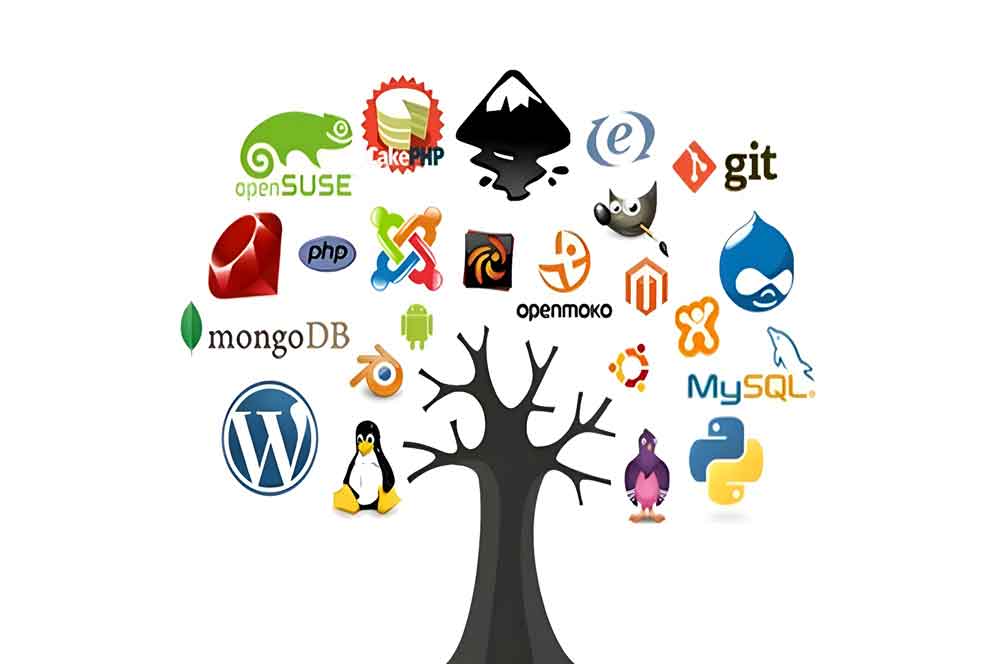Understanding Open Source Software: Benefits, Challenges, and Impact
In today’s digital world, open source software powers everything from the smartphone in your pocket to critical infrastructure systems worldwide. But what exactly is open source software, and why has it become so important? This article breaks down the concept of open source, explains how it works, and highlights its significance in modern technology.
What Is Open Source Software?
Open source software refers to computer programs whose source code—the human-readable instructions that make the software work—is freely available for anyone to view, modify, and distribute. Unlike proprietary or closed source software, where the code is kept secret, open source embraces transparency and collaboration.
The concept traces back to the early 1980s when Richard Stallman launched the Free Software Movement, which aimed to promote user freedom by providing access to source code. The movement gained significant momentum with Linus Torvalds’ development of Linux in 1991, which has since become one of the most successful open source projects in history.
How Open Source Software Works
The open source model operates on principles of collaboration and community involvement:
Collaborative Development
Open source projects typically involve communities of developers, enthusiasts, and users who work together to improve the software. This collective approach brings diverse skills and perspectives to solve problems and add features.
Version Control Systems
Open source projects rely on tools like
Git to manage contributions from multiple developers. These version control systems track changes, manage different versions of the code, and help resolve conflicts when multiple people edit the same files.
Code Repositories
Platforms like
GitHub and
GitLab host open source projects, providing a central location where developers can:
- Share their code
- Track issues and bugs
- Discuss improvements
- Review each other’s contributions
Forking and Branching
Contributors can create their own copies (“forks”) of open source projects to experiment with changes without affecting the original code. This enables innovation while maintaining stability in the main project.
Release Management
Most established open source projects follow structured processes for testing and releasing new versions, ensuring stability and reliability for users.

Open Source vs. Closed Source Software
Understanding the differences between open source and closed source (proprietary) software helps clarify the unique aspects of each approach:
| Aspect |
Open Source |
Closed Source |
| Source Code Access |
Freely available to view and modify |
Hidden from users |
| Licensing |
Uses licenses like GPL, MIT, or Apache that permit sharing and
modification |
Restrictive proprietary licenses that limit use and
modification |
| Development |
Community-driven with multiple contributors |
Internal teams with limited external input |
| Cost |
Generally free to use, though some commercial versions exist |
Often requires payment for licenses |
| Support |
Community forums, documentation, and sometimes paid support
options |
Official support channels, typically requiring payment |
| Transparency |
Full visibility into how the software works |
Limited visibility into internal operations |
Why Open Source Matters
Open source software has become increasingly important in the technology landscape for several compelling reasons:
1. Driving Innovation
By allowing anyone to build upon existing code, open source accelerates innovation. Developers don’t need to “reinvent the wheel” but can instead focus on solving new problems or improving existing solutions.
The collaborative nature of open source projects means ideas can come from anywhere, fostering creative solutions that might not emerge in closed environments.
2. Supporting Education and Skill Development
Open source provides invaluable learning opportunities for aspiring developers:
- Students can study real-world codebases
- New programmers can contribute to projects and receive feedback
- Self-taught developers can gain practical experience
This educational aspect creates a pipeline of skilled professionals who understand collaboration and code quality.
3. Enhancing Software Quality and Security
The “many eyes” principle suggests that when code is visible to many people, bugs and security issues are found and fixed more quickly:
- Security vulnerabilities can be identified by independent researchers
- Users can verify that software doesn’t contain malicious code
- Continuous peer review improves overall code quality
4. Enabling Business Flexibility
For businesses, open source offers significant advantages:
- No vendor lock-in, allowing companies to avoid dependency on single providers
- Lower costs for software acquisition and licensing
- Ability to customize software to meet specific needs
- Reduced barriers to entry for startups and small businesses
5. Improving Software Supply Chain Accountability
With growing concerns about software supply chain security, open source provides better transparency. Organizations can inspect the code they rely on and understand its dependencies.
Advantages of Open Source Software
The open source model offers several distinct benefits:
Lower Cost
Most open source software can be used without licensing fees, significantly reducing technology costs for individuals and
organizations. While enterprise support options may involve costs, these are typically lower than proprietary alternatives.
Flexibility and Customization
With access to the source code, users can modify software to:
- Add specific features needed for their use case
- Remove unwanted components
- Integrate with other systems
- Optimize performance for particular hardware
Open source projects often have active communities where users can:
- Find solutions to common problems
- Share knowledge and best practices
- Request features or report bugs
- Collaborate on improvements
Better Interoperability
Open source software typically adheres to open standards, making integration with other systems easier. This interoperability reduces the “silos” that often occur with proprietary systems.
No Vendor Lock-in
Users aren’t tied to a specific vendor and can switch providers or support services if needed. If a project is abandoned, the community can continue development (known as “forking” the project).
Challenges of Open Source Software
Despite its many advantages, open source software also faces certain challenges:
Support Limitations
While community support can be excellent, it may not offer the guaranteed response times that some organizations require. Critical
issues might not be addressed as quickly as with paid support contracts.
Learning Curve
Some open source solutions have steeper learning curves than their commercial counterparts, especially for non-technical users. Documentation might be less polished or user-friendly.
Feature Gaps
Open source projects sometimes prioritize core functionality over specialized features. The development may focus on what interests the community rather than market demands.
Maintenance Requirements
Organizations using open source software must stay vigilant about updates and security patches. Without a vendor pushing updates, this responsibility falls to the users.
Stability Concerns
Some open source projects—particularly smaller ones—may have less stable releases or uncertain development roadmaps.
Popular Open Source Software Examples
Open source software spans virtually every category of computing. Some of the most well-known examples include:
Operating Systems
- Linux: Powers everything from Android phones to most web servers and supercomputers
- FreeBSD: A robust, high-performance operating system
Web Browsers
- Mozilla Firefox: A privacy-focused web browser
- Chromium: The open source project behind Google Chrome
Web Servers
- Apache HTTP Server: The world’s most widely used web server
- Nginx: A high-performance web server and reverse proxy
Office Software
- LibreOffice: A comprehensive office suite compatible with Microsoft Office formats
- OpenOffice: Another popular office productivity suite
Content Management Systems
- WordPress: Powers over 40% of all websites on the internet
- Drupal: A flexible, enterprise-grade CMS
Media Software
- VLC Media Player: A versatile media player supporting numerous formats
- GIMP: A powerful image editing application similar to Photoshop
Development Tools
- Visual Studio Code: A popular code editor from Microsoft
- Git: The most widely used version control system
Databases
- MySQL: A widely used relational database
- PostgreSQL: An advanced open source database
- MongoDB: A leading NoSQL database
Open Source Licensing
Open source licenses define the legal terms under which software can be used, modified, and distributed. Some common licenses include:
Permissive Licenses
- MIT License: A simple, permissive license allowing almost any use
- Apache License 2.0: Permits commercial use while providing patent protection
- BSD License: Similar to MIT but with slightly different terms
Copyleft Licenses
- GNU General Public License (GPL): Requires that derivative works also be open
source
- Mozilla Public License: A middle-ground license between permissive and copyleft
Understanding these licenses is important for both users and contributors to open source projects.
Getting Involved with Open
Source
Anyone can participate in open source communities, regardless of technical skill level:
For Beginners
- Use open source software and provide feedback
- Report bugs when you find them
- Help improve documentation
- Join community discussions
For Developers
- Fix reported issues
- Add new features
- Review other people’s code
- Start your own open source project
For Organizations
- Contribute resources to projects you depend on
- Allow employees to work on open source during company time
- Open source internal tools that could benefit others
- Sponsor open source projects financially
Conclusion
Open source software represents one of the most significant paradigm shifts in how technology is created and shared. By embracing
transparency, collaboration, and community-driven development, open source has revolutionized the software industry and enabled innovations that would have been impossible under traditional closed source models.
From individual hobbyists to the largest technology companies in the world, open source has created a collaborative ecosystem where knowledge is shared freely and the best ideas can come from anywhere. As technology continues to evolve, the principles of open source—transparency, collaboration, and shared ownership—will likely remain fundamental to progress and innovation.
Whether you’re a developer looking to improve your skills, a business seeking flexible and cost-effective solutions, or simply a user who values freedom and choice, open source software offers compelling advantages that continue to shape the digital landscape.
</hr>
Additional Resources
- Open Source Initiative: The organization that maintains the definition of open source
- GitHub Explore: Discover trending and popular open source projects
- Open Source Guide: Resources for individuals and organizations interested in open source
- Choose a License: Help selecting the right open source license for your project
- First Timers Only: Resources for making your first open source contribution






